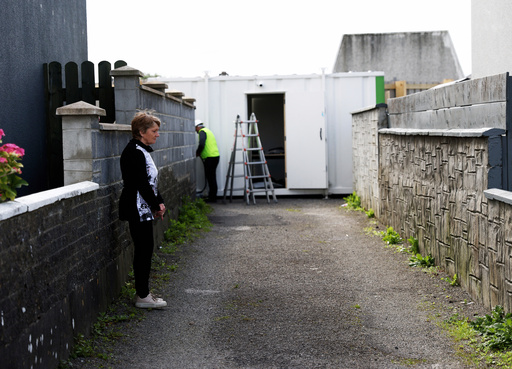In a small town in western Ireland named Tuam, a discovery made in the 1970s by two adventurous boys has led to a profound moment of reckoning for Ireland. Chased away while trying to steal apples, Franny Hopkins and his friend Barry Sweeney climbed over the wall of the abandoned Bon Secours Mother and Baby Home. There, they stumbled upon a haunting revelation—a hidden grave laden with bones that would, many decades later, shed light on a dark chapter of Irish history.
The discovery unveiled a mass unmarked grave of babies in a former septic tank. Tuam, a town whose name signifies a burial place, was about to reveal much more than could have been imagined. With the tireless efforts of local historian Catherine Corless, the distressing truth about the resting place of nearly 800 infants and children has brought about an excavation in hopes of offering these young souls a due recognition that has long been denied.
Mother and baby homes, though not unique to Ireland, were institutions laden with stigma in a nation heavily influenced by Catholicism. These homes, primarily run by Catholic nuns since the 1920s, housed women who became pregnant outside of marriage, thus shamed and ostracized. The Tuam home, transformed from an old famine-era workhouse, was one such institution. Inside, it harbored a grim tale where mothers separated from their children lived in tough conditions before being permanently expelled.
Catherine Corless, neither an archeologist nor a historian by profession, was drawn to this story. She endeavored to write a piece for her local historical society, but her journey exposed a cruel past as inquiries unveiled staggering mortality rates among the children. Many of these babies had no marked graves until her research confirmed the hearsay of their undignified burials.
Anna Corrigan, meanwhile, was unraveling her family’s hidden history in Dublin. Raised as an only child, she discovered she had two brothers who were left at the Tuam mother and baby home. This discovery widened the personal pain and loss felt by many in the community. Inspection records from 1947 painted a bleak picture—malnourished infants in inadequate conditions. But these records were not always transparent, as shows of falsified documents were part of a pattern of hiding truth.
The intense revelations laid bare by Corless’s research gained international attention after Corrigan united with journalist Alison O’Reilly. The ensuing media scrutiny forced both the Irish government and the Catholic Church into confronting this painful part of Irish history. Voices like that of Peter Mulryan, who spoke of the hardships faced by families affected by the Tuam home, amplified the perseverance for justice and recognition.
In 2017, a test excavation confirmed the findings, but the realization of inappropriate burials had been met with disbelief and denial by some. However, acknowledgement from the state and the Church led to official apologies and pledges to rectify the prevailing misconceptions. Prime Minister Micheál Martin and the Bon Secours Sisters acknowledged past wrongs, emphasizing Ireland’s moral responsibility to those wronged.
The excavation that began recently is a reminder of a tumultuous history that needs to be reconciled with respect for those lives lost. Many, including survivors and relatives across the globe, hope to match DNA samples in order to provide these children proper burials. Yet, this recovery effort remains complex, spanning two years, amid diverse opinions on disturbing the site. Some residents, holding onto past rites, resist any alteration.
For relatives and survivors like Corrigan, the excavation presents an opportunity for overdue closure. The symbolic initiation of the dig marks a time to acknowledge the voices of the past, offering the possibility of peace and recognition long denied. As the community looks ahead, the hope is that the tainted legacy of the Tuam home will finally find its resolution through remembrance, reconciliation, and rightful honors.


